Abstract
Two experiments were carried out in which children's sensitivity to changes in reinforcer density (number of reinforcers per session) was measured in a choice paradigm. In Experiment 1, 24 girls (ages 6, 9, and 12 years) performed on concurrent-chain schedules of reinforcement. The initial links were variable-interval 10-s schedules. One terminal link always gave three tokens after 30 s, but the parameters associated with the other were varied. Independent manipulations of reinforcer size (two tokens or four tokens) and prereinforcement delay (25 s or 65 s) led to equal changes in the relative density of tokens that could be earned on the schedules. Subjects at all ages were sensitive to changes in reinforcer density brought about by changes in reinforcer size, whereas only 3 12-year-olds showed sensitivity to the changes brought about by manipulation of prereinforcer delay. In Experiment 2, titration procedures were used to test the extent of this insensitivity to delay in 32 6- and 12-year-old children. In these procedures, a repeated choice of the large reinforcer increased the delay to its delivery, and a repeated choice of the small reinforcer reduced the delay to the delivery of the large reinforcer. Whereas 6-year-old boys and girls tended to maintain a strong preference for the large reinforcer, so increasing the delay to its delivery, 12-year-olds tended to distribute their responses to both alternatives, thus producing a stable level of delay to the large reinforcer. The results from the two experiments support the idea of two stages in the development of adaptive intertemporal choice.
Keywords: development, adaptation, insensitivity, concurrent-chain schedules, titration procedures, block press, children
Full text
PDF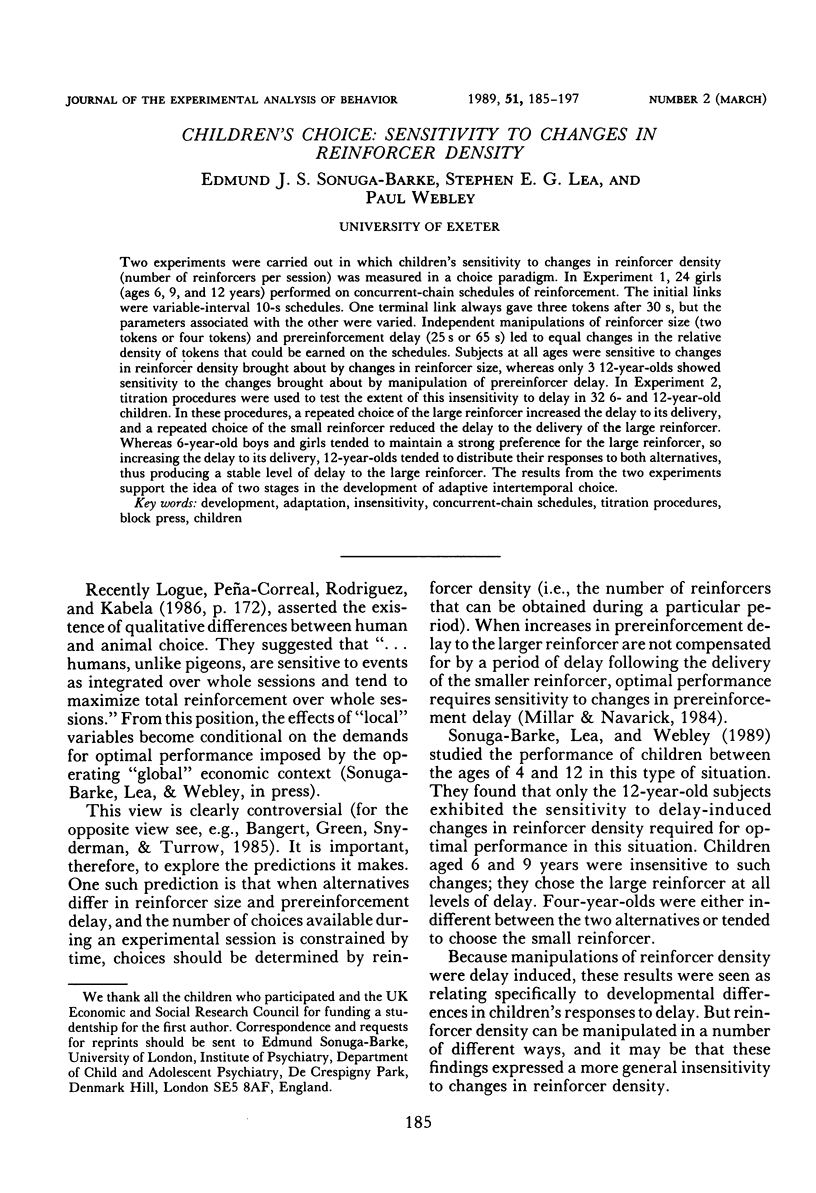
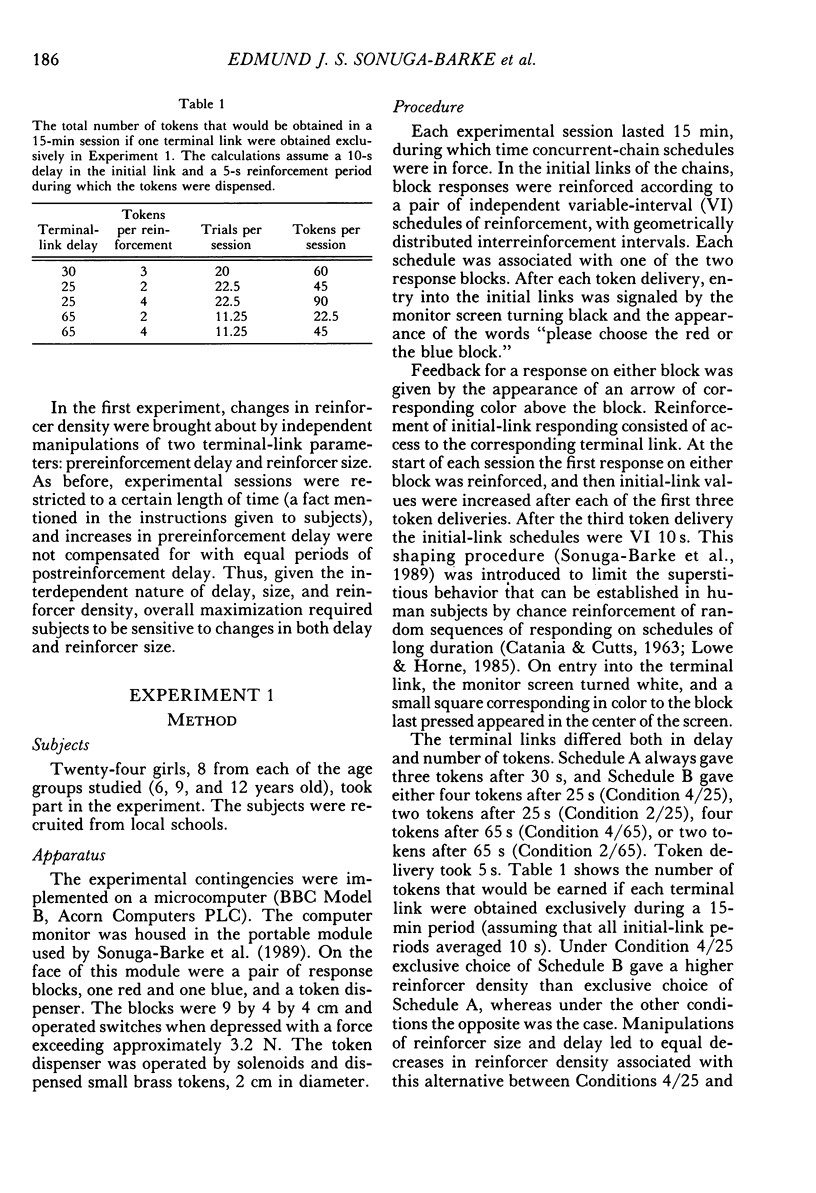

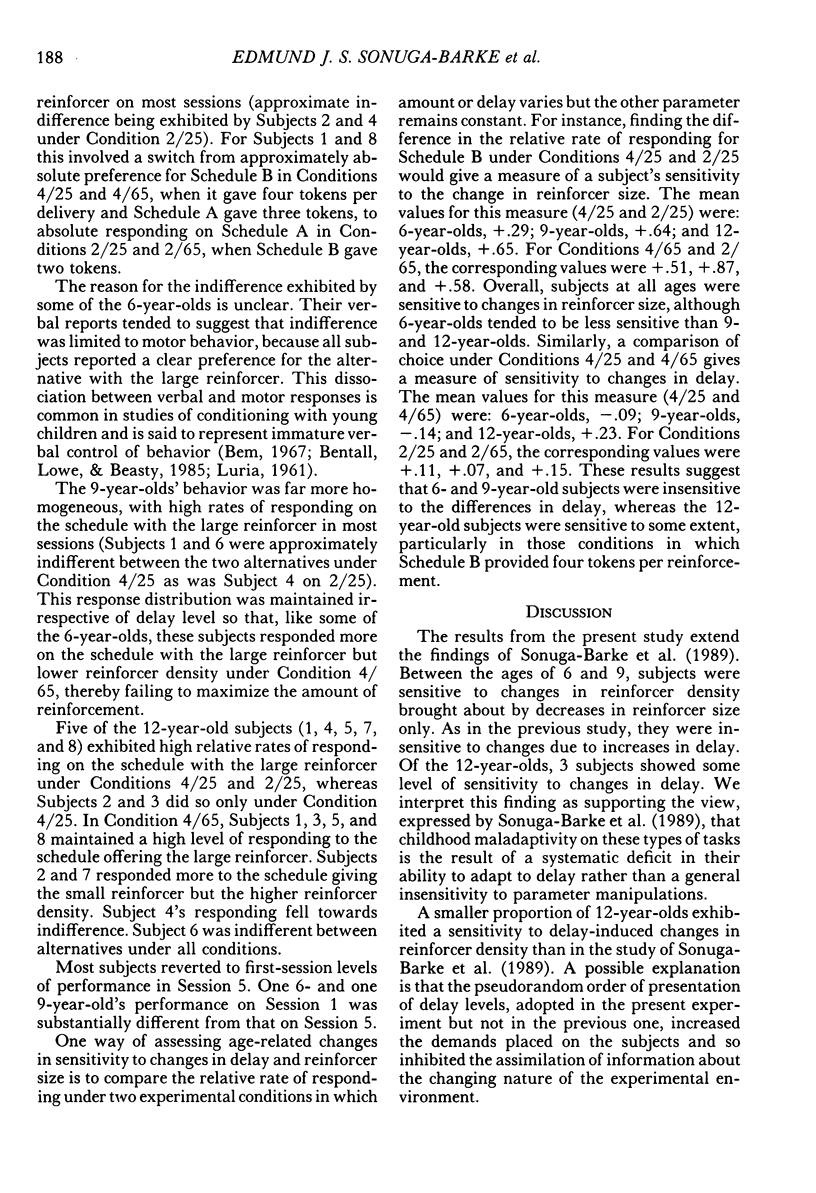
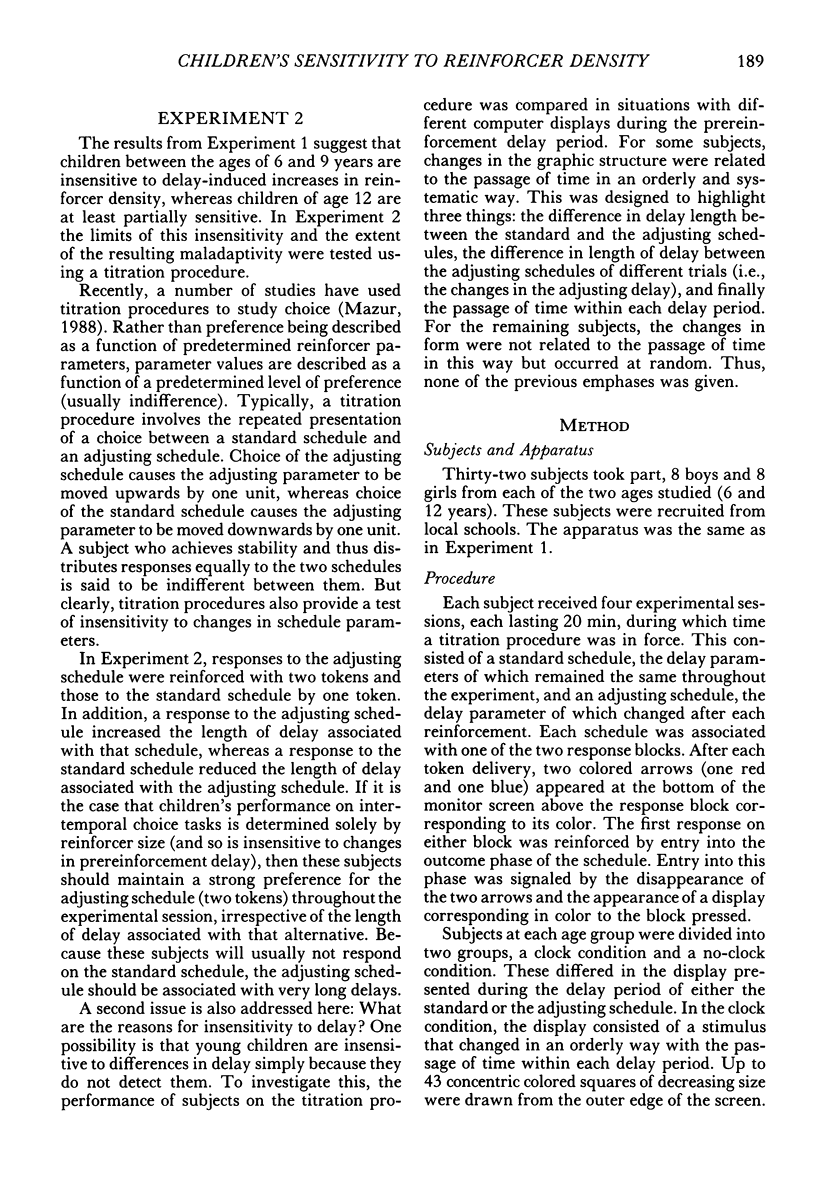
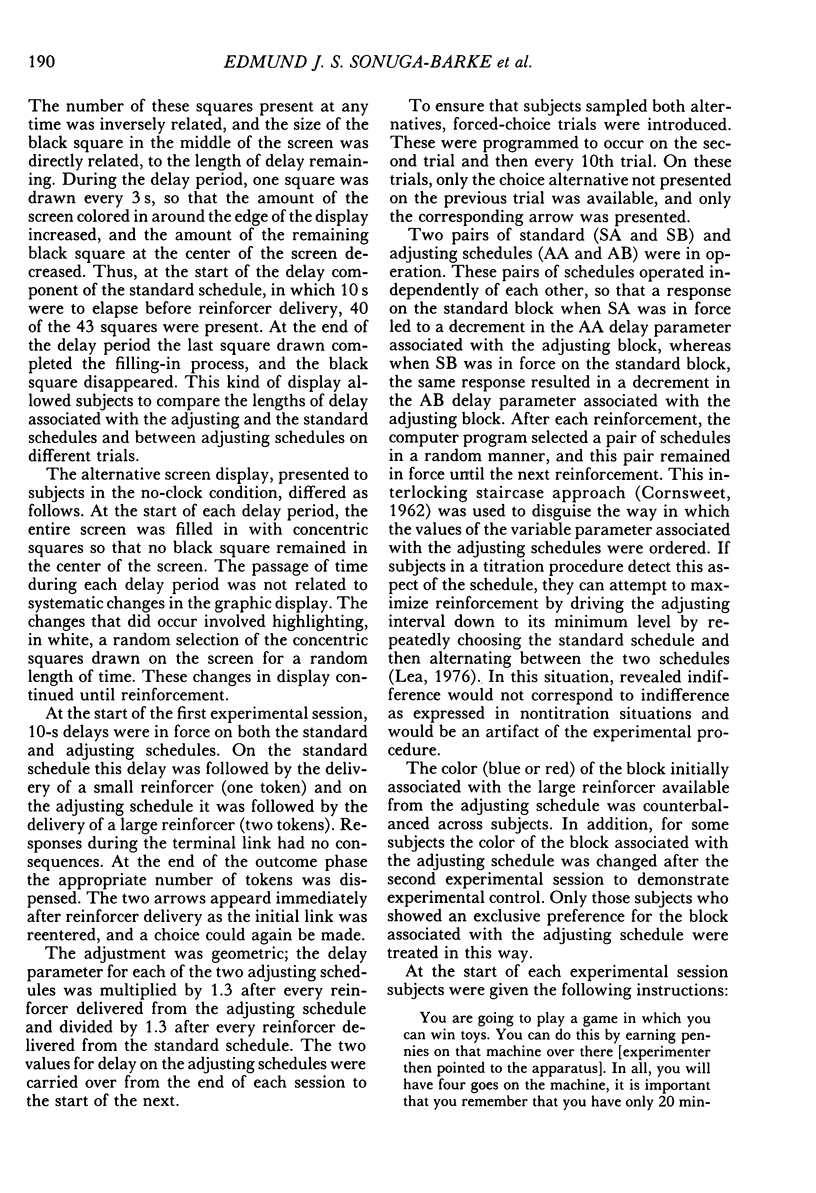
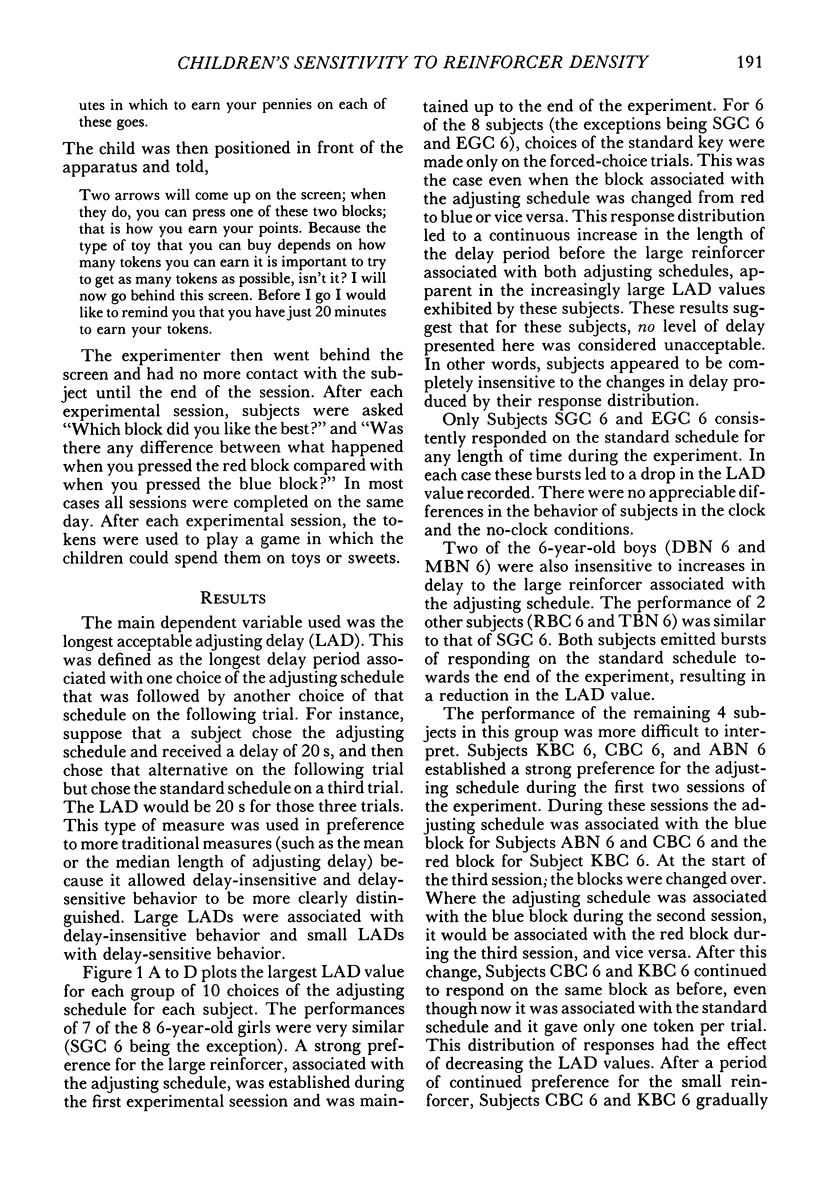
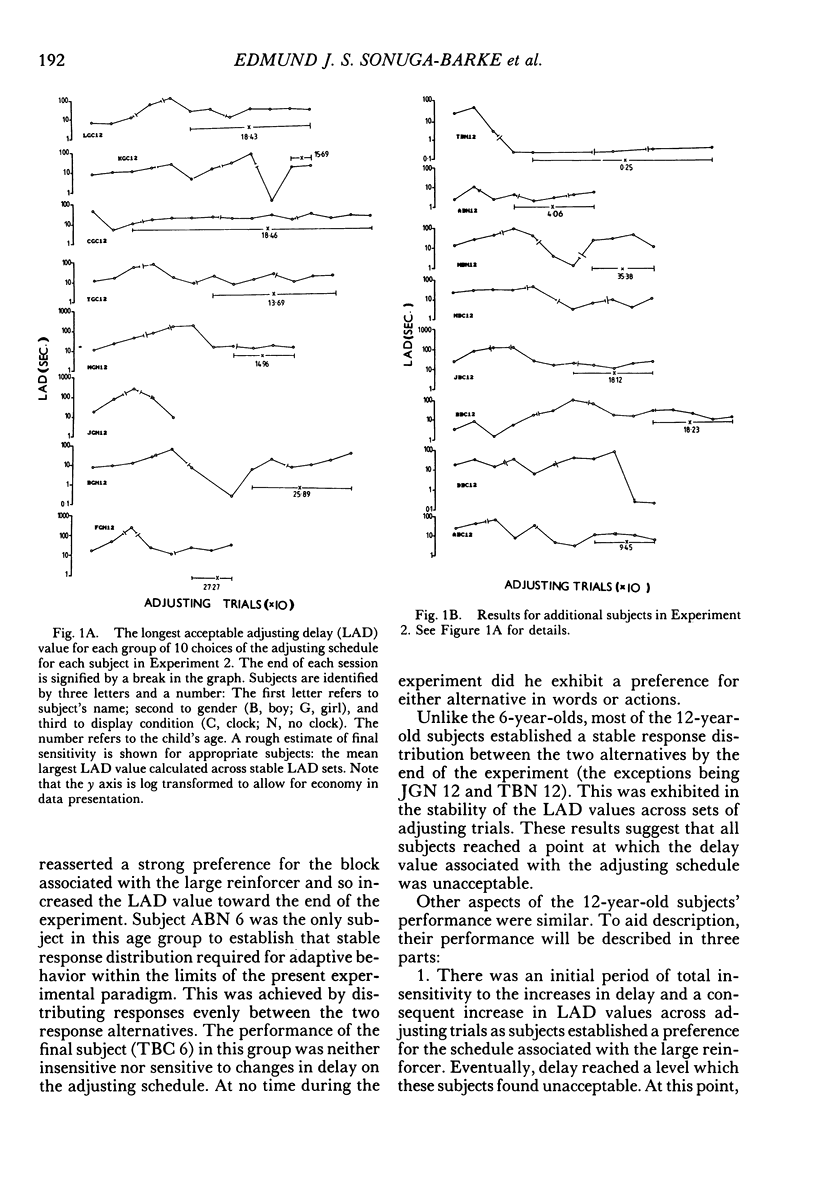
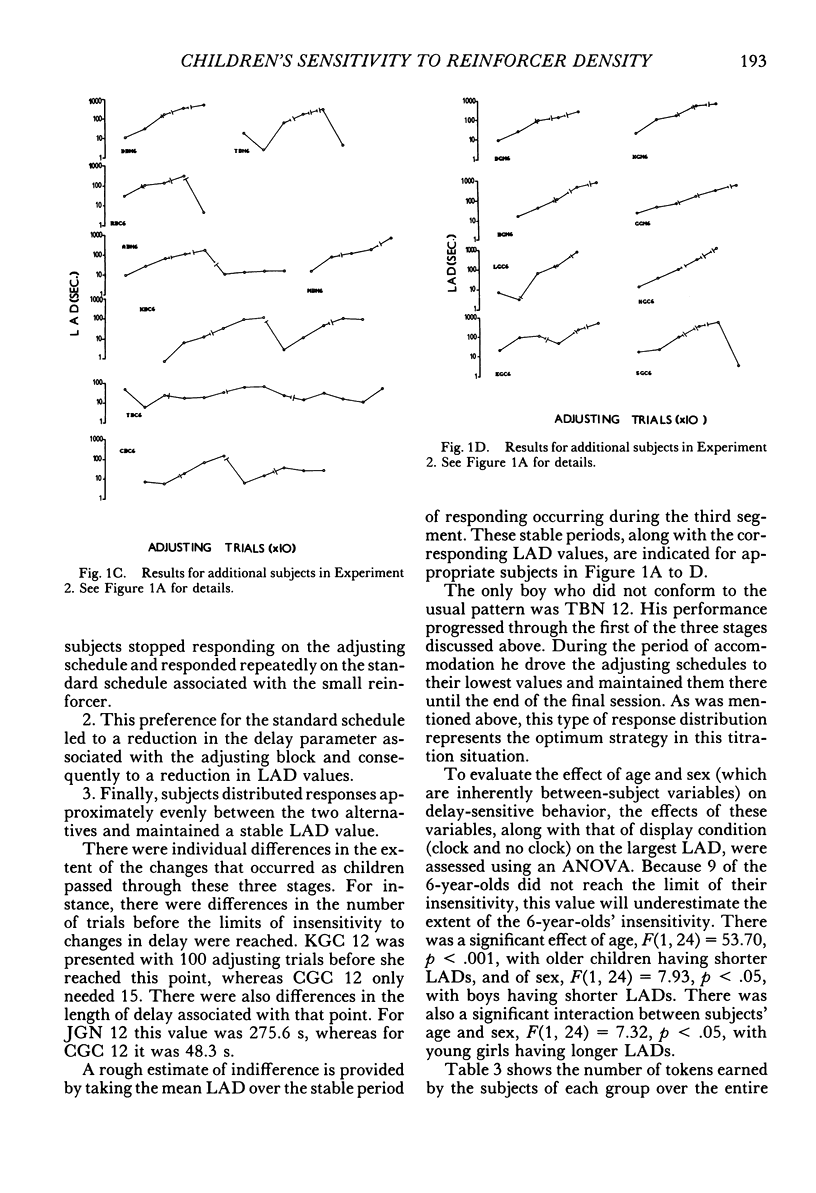
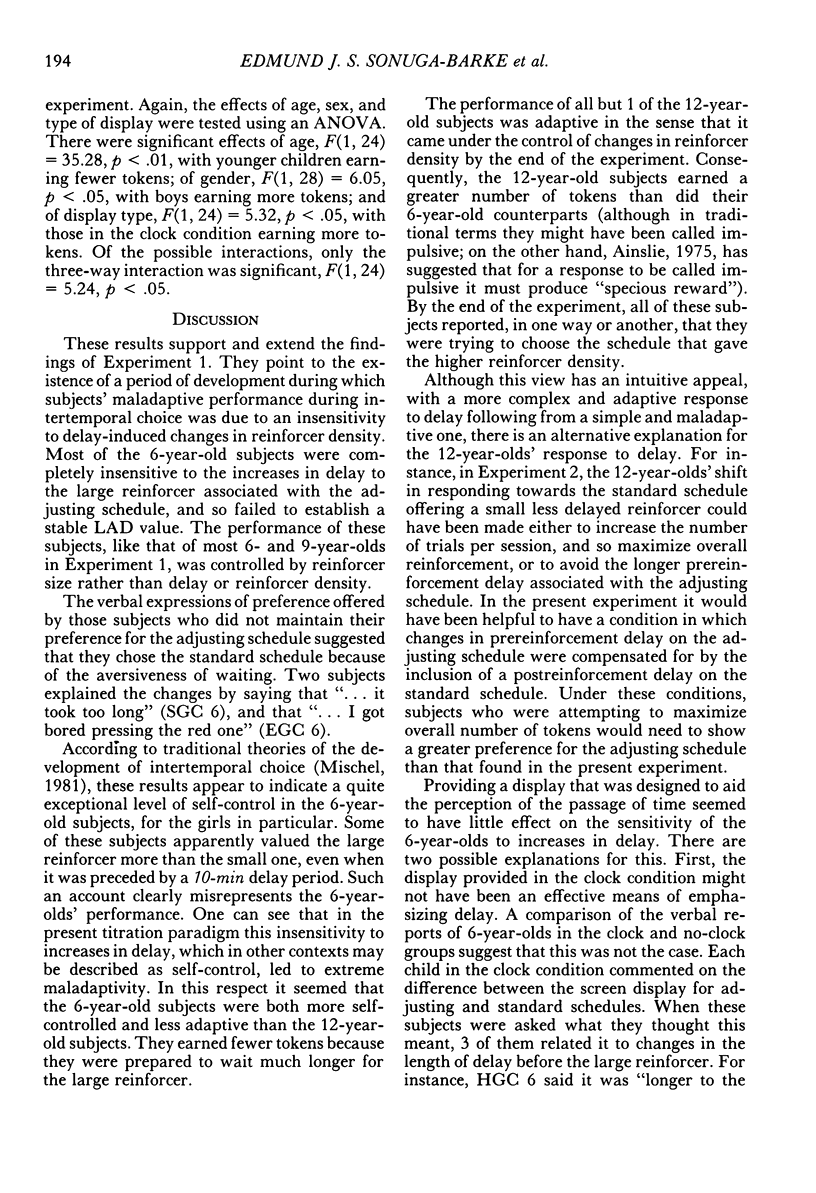
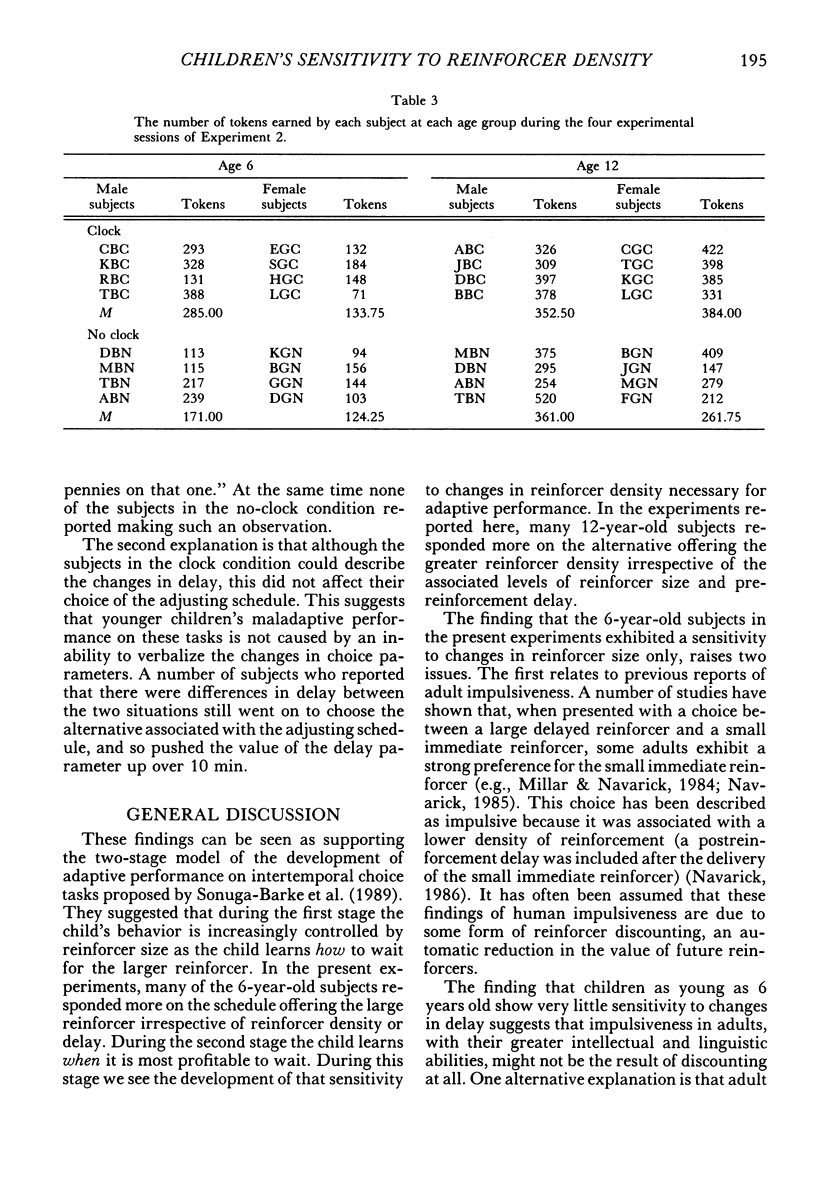
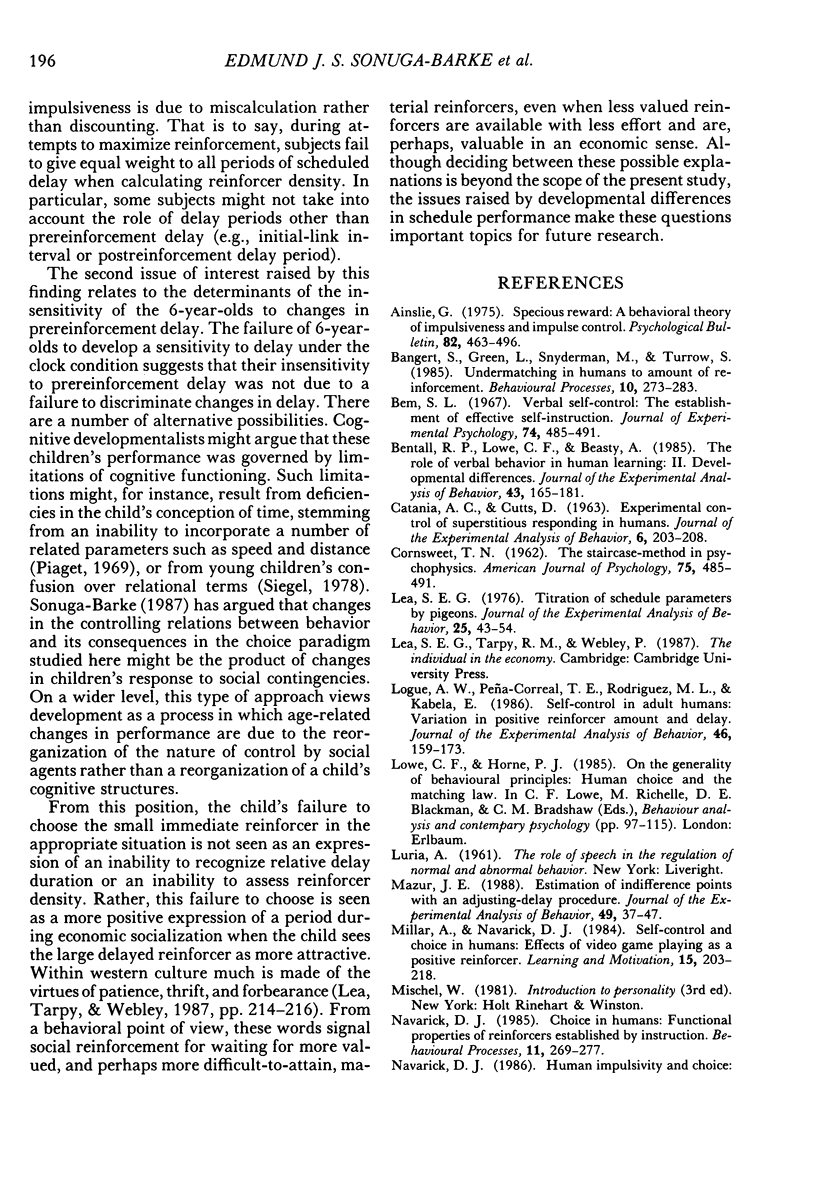
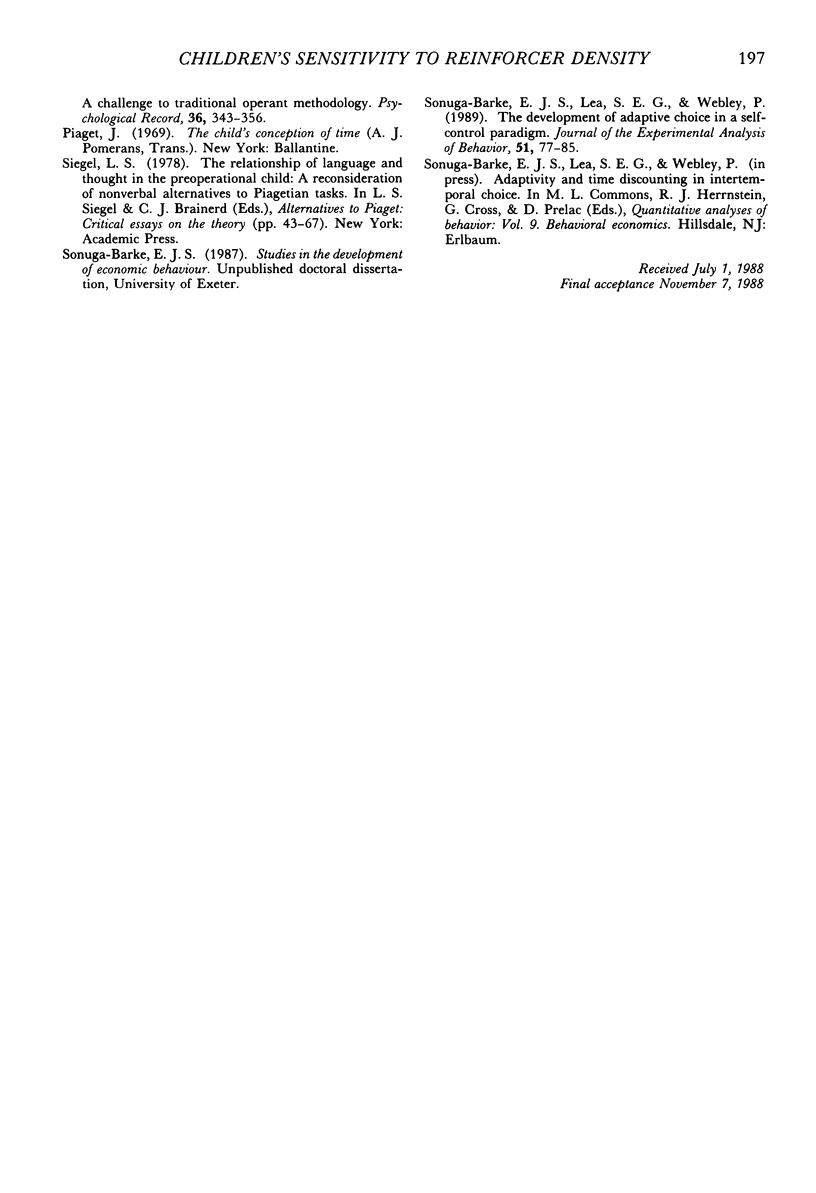
Selected References
These references are in PubMed. This may not be the complete list of references from this article.
- Ainslie G. Specious reward: a behavioral theory of impulsiveness and impulse control. Psychol Bull. 1975 Jul;82(4):463–496. doi: 10.1037/h0076860. [DOI] [PubMed] [Google Scholar]
- Bem S. L. Verbal self-control: the establishment of effective self-instruction. J Exp Psychol. 1967 Aug;74(4):485–491. doi: 10.1037/h0024822. [DOI] [PubMed] [Google Scholar]
- Bentall R. P., Lowe C. F., Beasty A. The role of verbal behavior in human learning: II. Developmental differences. J Exp Anal Behav. 1985 Mar;43(2):165–181. doi: 10.1901/jeab.1985.43-165. [DOI] [PMC free article] [PubMed] [Google Scholar]
- CATANIA A. C., CUTTS D. Experimental control of superstitious responding inhumans. J Exp Anal Behav. 1963 Apr;6:203–208. doi: 10.1901/jeab.1963.6-203. [DOI] [PMC free article] [PubMed] [Google Scholar]
- CORNSWEET T. N. The staircrase-method in psychophysics. Am J Psychol. 1962 Sep;75:485–491. [PubMed] [Google Scholar]
- Lea S. E. Titration of schedule parameters by pigeons. J Exp Anal Behav. 1976 Jan;25(1):43–54. doi: 10.1901/jeab.1976.25-43. [DOI] [PMC free article] [PubMed] [Google Scholar]
- Logue A. W., Peña-Correal T. E., Rodriguez M. L., Kabela E. Self-control in adult humans: variation in positive reinforcer amount and delay. J Exp Anal Behav. 1986 Sep;46(2):159–173. doi: 10.1901/jeab.1986.46-159. [DOI] [PMC free article] [PubMed] [Google Scholar]
- Mazur J. E. Estimation of indifference points with an adjusting-delay procedure. J Exp Anal Behav. 1988 Jan;49(1):37–47. doi: 10.1901/jeab.1988.49-37. [DOI] [PMC free article] [PubMed] [Google Scholar]
- Sonuga-Barke E. J., Lea S. E., Webley P. The development of adaptive choice in a self-control paradigm. J Exp Anal Behav. 1989 Jan;51(1):77–85. doi: 10.1901/jeab.1989.51-77. [DOI] [PMC free article] [PubMed] [Google Scholar]


